06:53
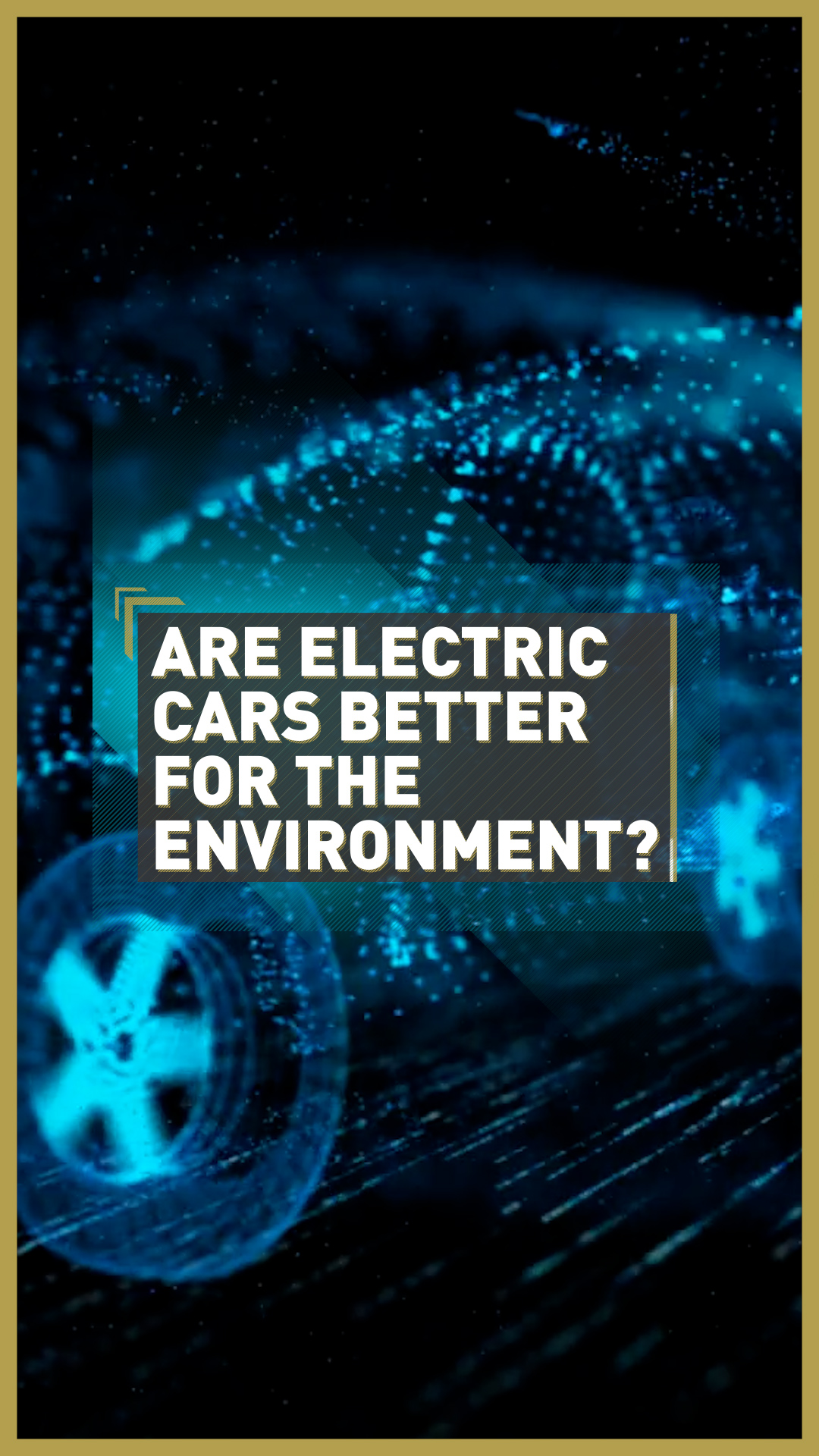
Electric vehicles have become an increasingly discussed topic in recent years and they've also become more visible on streets around the world.
As global governments heed climate warnings and set out goals to lower their emissions, many are turning to the automotive industry as a key area in which to reduce the impact on the environment. And pushing for cars to go electric is one of the main ways they plan to achieve this goal.
Road transport makes up 75 percent of the CO2 emissions in the transport industry, (followed by planes, with 10 percent), which in total produces 21 percent of global CO2 emissions, or 24 percent if only emissions from energy are considered.
But are electric vehicles (EVs) the best way to reduce global emissions and reach net-zero targets?
In short, the answer is yes ... and no. Yes, because over their lifetime EVs are less polluting than petrol and diesel cars, but no, because less pollution doesn't mean no pollution, so there's still a long way to go to ensure EVs are not also harming the environment.

What are electric vehicles and how do they work?
There are several types of electric vehicles. They can mainly be grouped in categories including battery electric vehicles (BEVs), plug-in hybrid electric vehicles (PHEVs), hybrid electric vehicles (HEVs) and fuel cell electric vehicles (FCEVs) – usually known as hydrogen cell vehicles, among others.
Battery electric vehicles and fuel cell electric vehicles are the two that run completely on electricity and are plug-in vehicles. Battery electric vehicles are the most common type of all-electric vehicles, and the most different from conventional petrol or diesel cars.
"So, a regular vehicle uses an internal combustion engine, you take fuel, you combust it and you produce energy to make the car go," Rachel Muncrief, deputy director of the International Council on Clean Transport explained to CGTN Europe.
"An electric vehicle, you have a battery where the energy is stored and then that battery powers an electric motor. And of course, that battery also has to be charged with electricity," she added.
This means that thanks to lithium-ion batteries, electric vehicles release the chemically stored energy electrochemically without any sort of combustion, as opposed to fossil fuels being burned in the engine of petrol/diesel cars to transform the stored energy into kinetic, or movement energy, which releases fumes from the tailpipe producing CO2 emissions.
"What comes out of the tailpipe of a vehicle that's powered by an internal combustion engine can have effects on, two main pillars around this," Saul Lopez, e-mobility manager at the European Federation for Transport and Environment (T&E) told CGTN Europe.
"One is the greenhouse gas it emits, which affects climate change. And then the other is air quality with toxic fumes that can go deep into our lungs and then cause diseases as bad as cancer," he added.
But while electric vehicles don't release any tailpipe emissions while driving, greenhouse gas emissions are still produced in other parts of the production of these vehicles.

Electric vehicles run on a battery which is charged by electricity so doesn't produce tailpipe emissions like internal combustion engine vehicles. /Kirsty Wigglesworth/AP Photo
Electric vehicles run on a battery which is charged by electricity so doesn't produce tailpipe emissions like internal combustion engine vehicles. /Kirsty Wigglesworth/AP Photo
At what stages are electric vehicles harmful for the environment?
A common argument used against electric vehicles is that their production is more energy-intensive than conventional cars.
While this is correct and researchers have said producing an electric vehicle is in fact 1.5 times more energy-intensive, they also say it is important to assess the entire lifecycle of an electric vehicle and the total emissions it produces over its lifetime, before drawing conclusions.
Many scientists and researchers have carried out what is called a life cycle analysis (LCA) of electric vehicles to determine their exact benefits and drawbacks for the environment.
Although these analyses may vary widely depending on several factors, including, where the electric vehicle parts and battery are produced, as well as where it is driven and the specific energy grid in each country, the stages of an electric vehicle's life which require the most energy are agreed upon.
"So, there is a life cycle analysis to be made because the resources mining, the raw materials processing and the manufacturing of the vehicle itself, that all has an associated carbon footprint. And indeed, this is the weakness of electric vehicles," Lopez said.
- Raw materials
The batteries that power electric vehicles, the most common of them known as lithium-ion batteries, need raw materials from the earth to be made.
These rare earth elements (REE) including lithium, nickel and cobalt, among others, only exist beneath the surface of the earth, so they need to be extracted, through mining, then refined and produced into batteries.
This entire process is very energy intensive because of the water, heat and sterile conditions involved. In addition, as most of these materials are found outside the European Union, it could be difficult to ensure that materials such as cobalt are sourced ethically, safely and without detrimental environmental impacts.

Extracting rare earth elements from many places, including lithium from salt flats in Bolivia, emits a large amount of CO2 emissions. /Dado Galdieri/AP
Extracting rare earth elements from many places, including lithium from salt flats in Bolivia, emits a large amount of CO2 emissions. /Dado Galdieri/AP
- Battery and vehicle manufacturing
After the materials are extracted, they then need to be delivered to the production factories, where the energy-intensive process of making them into batteries takes place.
In countries such as China, Japan and South Korea, where a large proportion of the batteries come from, electricity generation relies heavily on coal, which adds to the CO2 emissions from battery manufacturing.
According to the most recent report from the IVL Swedish Environmental Research Institute, the production of lithium-ion batteries on average emits somewhere between 61 and 106 kilos of carbon dioxide equivalents per kilowatt-hour battery capacity produced.
Then, assembling the rest of the car parts on the production line also emits CO2, similar to the process of assembling conventional petrol and diesel cars.
"So, when you actually produce the vehicle, the emissions from producing an electric vehicle versus the emissions from producing a conventional vehicle are about the same before you consider the battery," Muncrief explained. "The battery adds on average, maybe another 50 percent of that," she added.
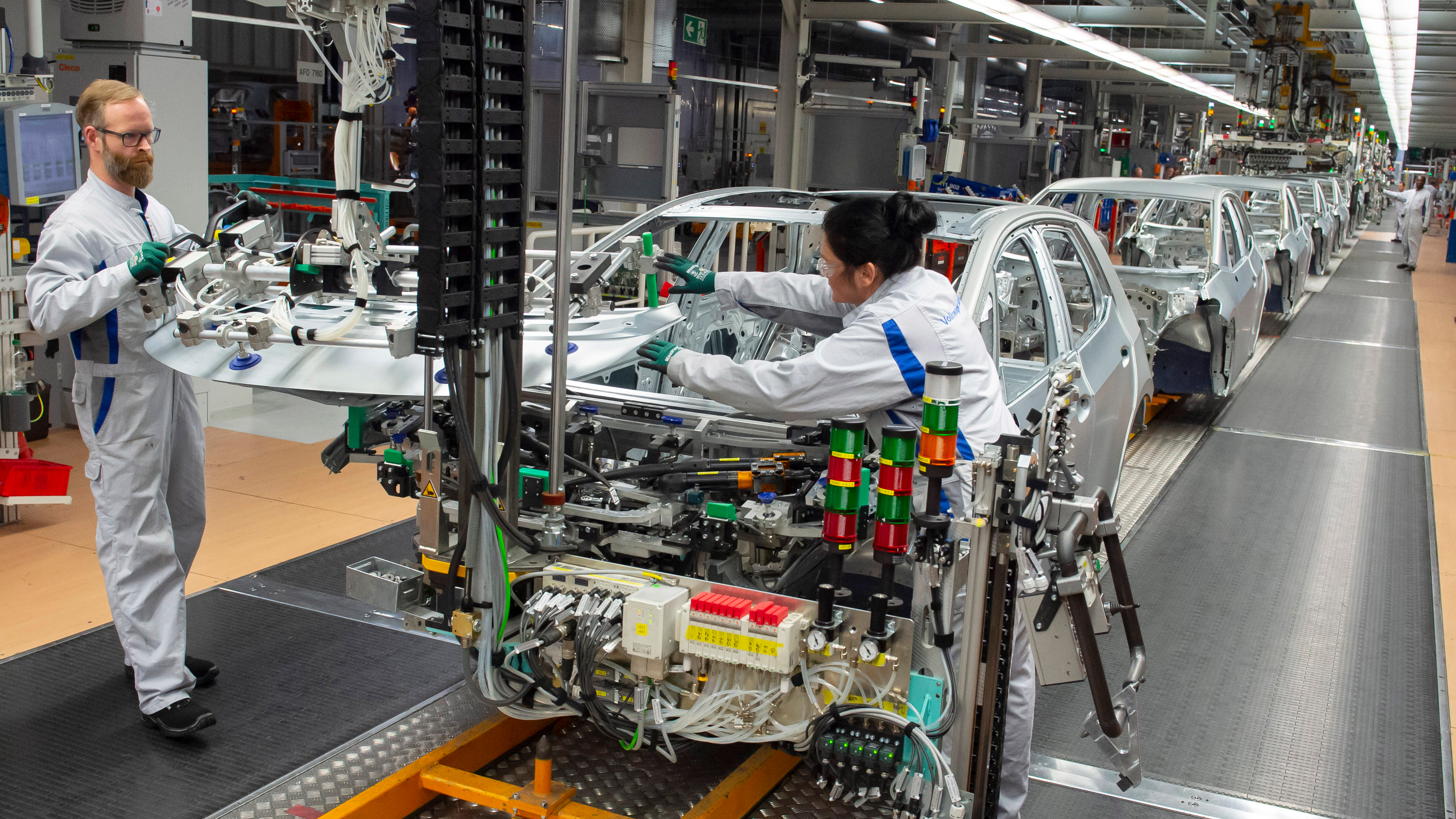
The assembly line in production factories for both the battery and the whole electric vehicle emits greenhouse gasses. /Jens Meyer/AP Photo
The assembly line in production factories for both the battery and the whole electric vehicle emits greenhouse gasses. /Jens Meyer/AP Photo
- Use and fuel consumption
Once an electric vehicle hits the road, that is where it can pay-off its carbon debt to a much larger degree compared with a conventional vehicle. This is because it doesn't have an exhaust pipe, so doesn't release CO2 emissions and air pollutants when driven.
However, there are emissions involved at this stage, although they are not coming out of the vehicle itself, but out of a distant power plant instead, as the electricity used to refuel electric vehicles when they're plugged into the charging points has to come from somewhere.
It's at this stage that the emissions are really dependent on where in the world the electric vehicle is being driven and charged, as the cleaner the electricity mix in the country – for example energy being generated from renewable sources rather than fossil fuels – the less emissions being produced when charging the electric vehicle and the more environmentally friendly the use stage is.
- End of life
The end-of-life stage of an electric vehicle, when considered in isolation, has the smallest impact on total life cycle emissions. However, it also provides a good opportunity to minimize the climate impacts during other stages of the electric vehicle's life.
"Recycling metals from used batteries is an important step in reducing the need for new raw materials. In Europe cobalt, nickel and copper are currently recycled with relatively high efficiency," the IVL report stated.
"In contrast there is little large-scale recycling of lithium due to high recycling costs, relatively low raw material prices and low volumes of collected batteries," it added.
According to Friends of the Earth Europe, only five percent of lithium was being collected in the EU market, while the rest was either incinerated or dumped in landfills, which is harmful to the environment.
But as electric vehicles become more popular and technologies are developed to better reuse and recycle battery and car components, this could help decrease the environmental impacts of extracting new raw materials.
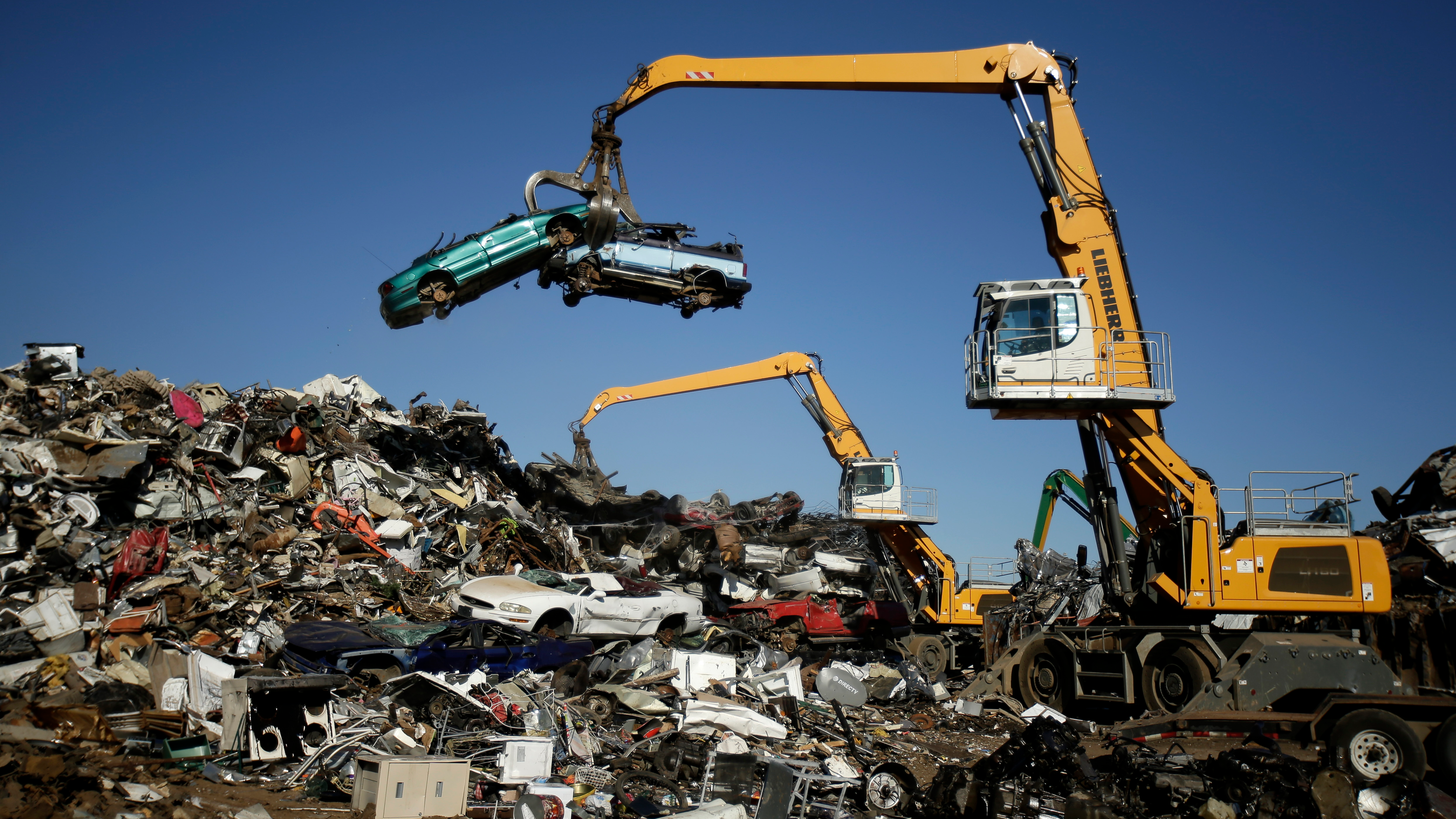
The end-of-life stage can be harmful to the environment if the battery and car parts are incinerated or dumped in landfills instead of being reused or recycled. /Charlie Riedel/AP Photo
The end-of-life stage can be harmful to the environment if the battery and car parts are incinerated or dumped in landfills instead of being reused or recycled. /Charlie Riedel/AP Photo
The overall impact of electric vehicles on the environment
According to T&E, which released a report analyzing the CO2 emissions from the life cycle analysis of an electric vehicle in the European Union compared with a similar conventional petrol or diesel car, an average electric vehicle in the EU today is three times better for the environment.
This is because research has shown that despite the high level of emissions in the production stage, it pays back its carbon debt during the use stage, by not releasing tailpipe emissions, and being more efficient in using stored energy than conventional cars.
"An electric car's higher manufacturing-phase emissions would be paid back in two years of driving with European average grid electricity compared to a typical vehicle," the ICCT wrote in its latest report. "This emissions recovery period is no more than three years even in countries with relatively higher-carbon electricity such as in Germany," it added.
Translated into the distance required to be driven, T&Es e-mobility manager, Saul Lopez said "once you have driven 25,000 kilometers with an electric vehicle, you have a balance in terms of carbon footprint between what it costs in terms of CO2 emissions to manufacture the vehicle and drive 25,000 kilometers, and from that point onwards, you are emitting much less over the life cycle of the vehicle than the equivalent diesel or petrol car."
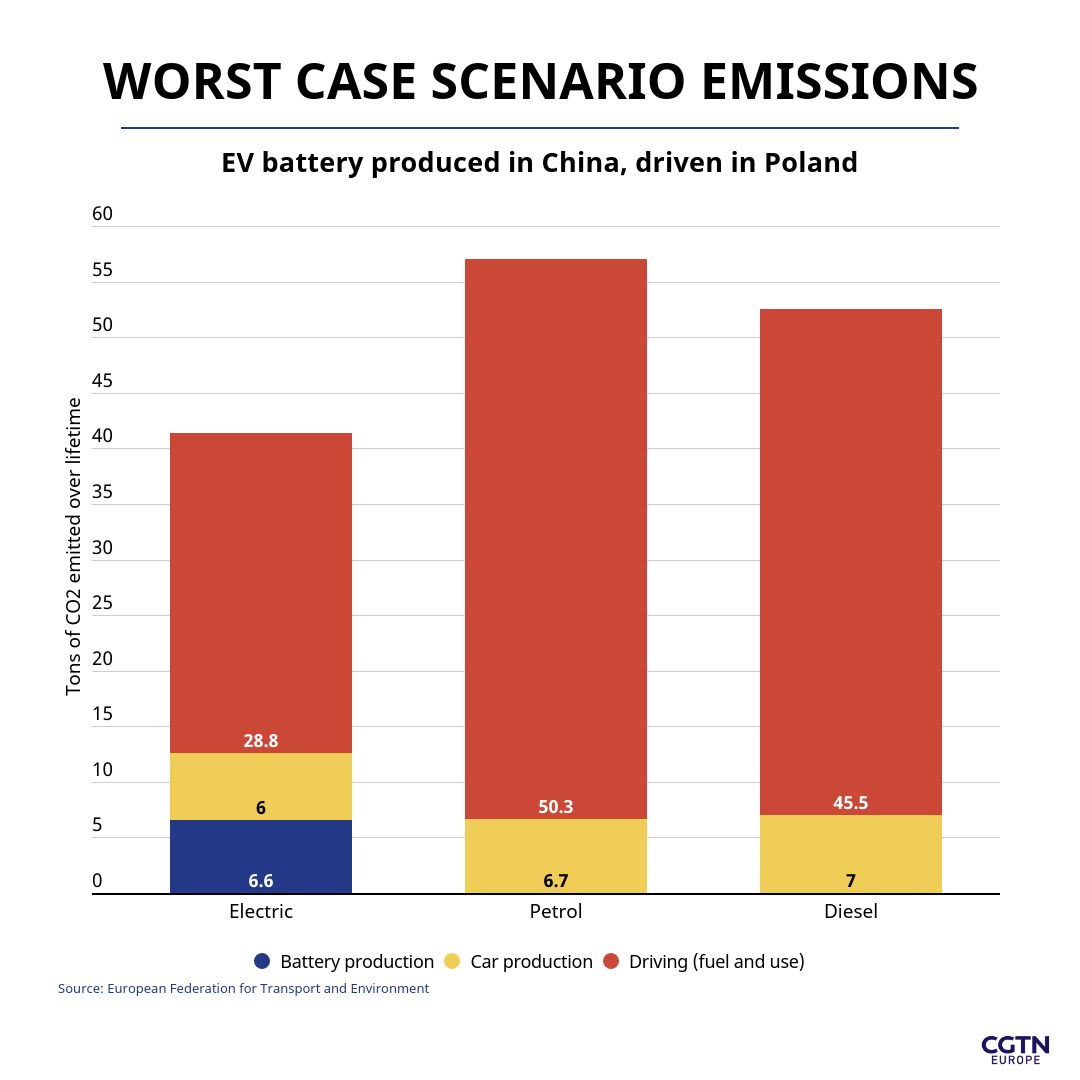
While this is the average in the EU, in its report, T&E also stated that even in the worst-case scenario, in which an electric vehicle battery is produced in a currently carbon-reliant country such as China and it runs on the EU's currently most carbon-intensive grid, such as Poland, it is still between 20 percent and 30 percent cleaner than its diesel or petrol equivalent.
And in the best-case scenario, in which the battery is made in Europe and the vehicle runs on renewable electricity, such as Sweden's hydro power, emissions are around 80 percent less than the diesel or petrol equivalent.
"And, crucially, this is very important, the electric vehicles will become better with time because as the European Union economy decarbonizes and therefore the systems used to generate power, the power generation sector decarbonizes as well, the CO2 footprint of an electric vehicle will keep going down," Lopez said.
On a global scale, similar conclusions have also been drawn on the benefits of electric vehicles, most recently from an independent study, led by researchers from Radboud University in the Netherlands, working with the universities of Exeter and Cambridge in the UK.
"We show that already under current carbon intensities of electricity generation, electric cars and heat pumps are less emission intensive than fossil-fuel-based alternatives in 53 world regions, representing 95 percent of the global transport and heating demand," the researchers said.
"Even if future end-use electrification is not matched by rapid power-sector decarbonization, it will probably reduce emissions in almost all world regions," they added.
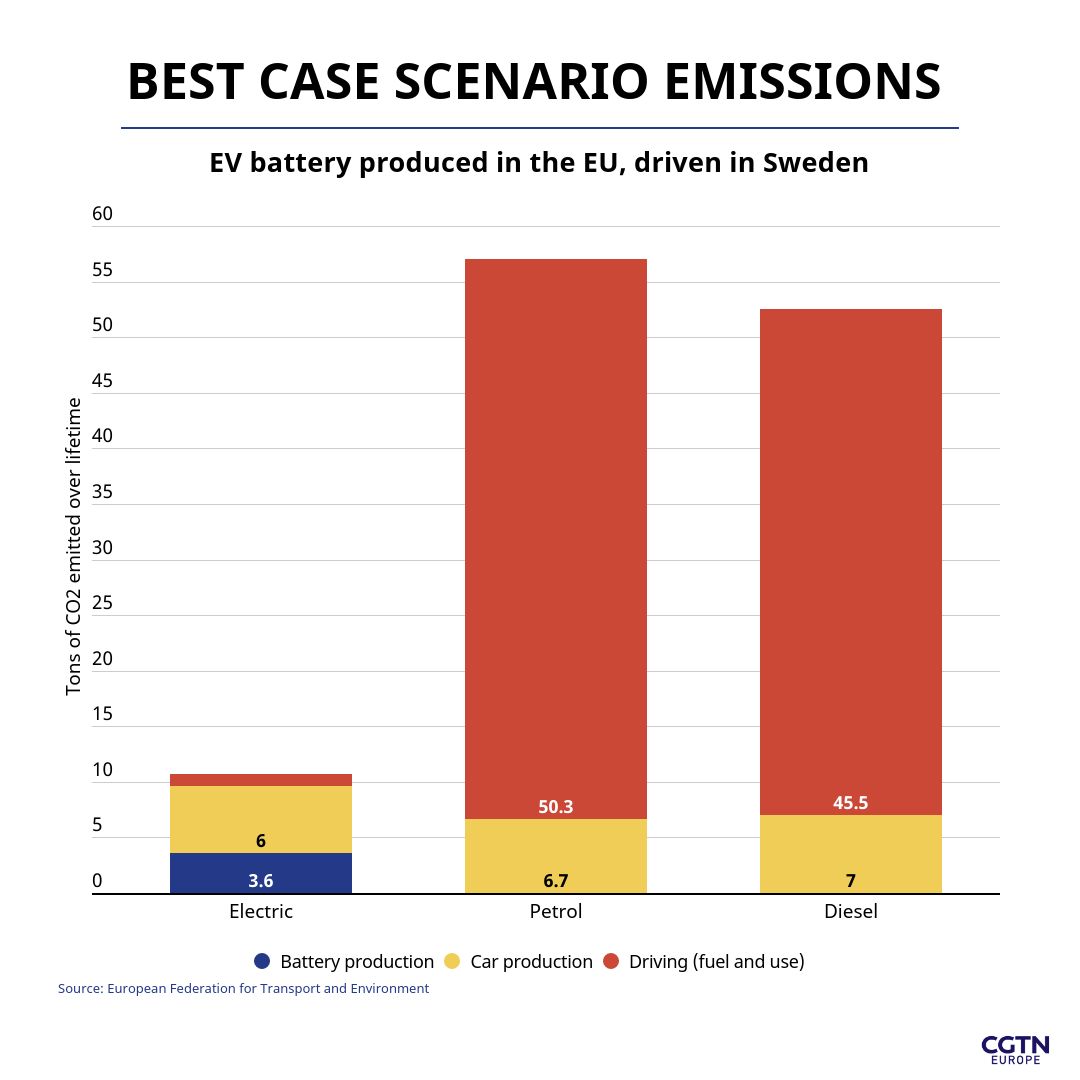
What more should be done?
The sale of electric vehicles has been increasing in recent years. Globally, 2.3 million electric cars (including plug-in hybrid electric vehicles) were sold. Europe in particular has recorded an increase in sales from previous years, as sales in July this year overtook China for the first time in a decade, with 500,000 vehicles sold.
Already, this increase in electric vehicle sales has resulted in a noticeable drop in CO2 emissions this year, despite an increase in emissions from new cars and vans last year according to the European Environment Agency.
T&E said in a report that new car CO2 emissions dropped from levels of over 122g/km in the first half of 2019, to 111 g/km in H1 2020, the largest drop since the EU 2020/21 car CO₂ emission standards came into effect in 2008.
"Despite the COVID-19 crisis, the total number of electric cars sold in Europe is expected to double from half a million in 2019 up to one million in 2020, and reach 1.8 million in 2021," the report stated.
However, regardless of this increase in demand for electric vehicles and the environmental benefits it may be bringing, researchers say policies to replace petrol and diesel cars are not enough on their own.
"Of course, electric vehicles are definitely not the silver bullet. It would be too easy. So, having these goals of decarbonizing transport by switching as fast as possible to zero-emission vehicles are very good," Lopez said.

Switching from fossil fuels to renewable energy to power the electricity grid is needed to ensure decarbonization across all sectors and for greener electric vehicles. /Federico Gambarini/dpa via AP
Switching from fossil fuels to renewable energy to power the electricity grid is needed to ensure decarbonization across all sectors and for greener electric vehicles. /Federico Gambarini/dpa via AP
Governmental policies also need to work towards decarbonizing all the stages involved in the production of an electric vehicle.
"So, if you want to decrease the emissions in all of those different stages, you need good regulations to make the mining of raw materials more efficient, and lower emissions," Muncrief said.
"You can put regulations in place to incentivize the best technology and the best production of batteries. And then on recycling, you also put in place the regulations to ensure that they're recycled as much as possible. And for example, in Europe, they're working on revising the battery directive, that would essentially be a good framework for ensuring that all of those stages are improved," she added.
But while steps are being taken and goals set to reduce CO2 emissions on an industrial scale, more can also be done to minimize individual carbon footprints and reliance on private transport.
"We can definitely achieve a zero-emissions transport system if we start betting on more livable cities so that people can walk more, cycle more, share transport, so that means using public transport, but also micro-mobility, multimodal mobility solutions in cities," Lopez explained.
"We need to combine all these different options for transport, be it personal or collective. So, the overarching goal should be a zero-emissions transport system that's affordable, that everybody can use and that is shared," he added.
Video editor: Riaz Jugon
Animations: James Sandifer

